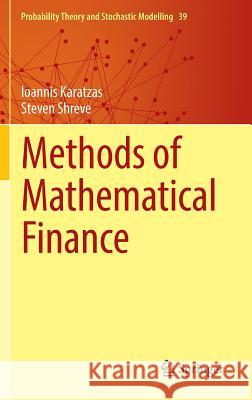Methods of Mathematical Finance » książka
Methods of Mathematical Finance
ISBN-13: 9781493968145 / Angielski / Twarda / 2016 / 415 str.
This book is intended for readers who are quite familiar with probability and stochastic processes but know little or nothing about ?nance. It is written in the de?nition/theorem/proof style of modern mathematics and attempts to explain as much of the ?nance motivation and terminology as possible. A mathematical monograph on ?nance can be written today only - cause of two revolutions that have taken place on Wall Street in the latter half of the twentieth century. Both these revolutions began at universities, albeit in economics departments and business schools, not in departments of mathematicsor statistics. Theyhaveledinexorably, however, to anes- lation in the level of mathematics (including probability, statistics, partial di?erential equations and their numerical analysis) used in ?nance, to a point where genuine research problems in the former ?elds are now deeply intertwined with the theory and practice of the latter. The ?rst revolution in ?nance began with the 1952 publication of "Po- folio Selection," an early version of the doctoral dissertation of Harry Markowitz. This publication began a shift away from the concept of t- ing to identify the "best" stock for an investor, and towards the concept of trying to understand and quantify the trade-o's between risk and - turn inherent in an entire portfolio of stocks. The vehicle for this so-called mean-variance analysis of portfolios is linear regression; once this analysis is complete, one can then address the optimization problem of choosing the portfolio with the largest mean return, subject to keeping the risk (i. e.











